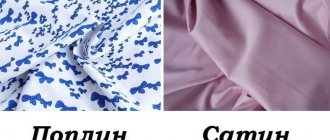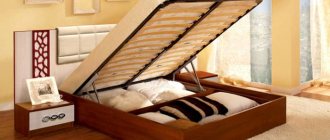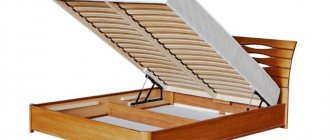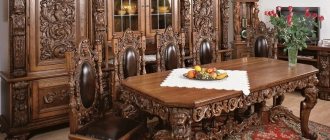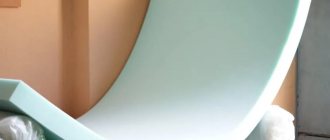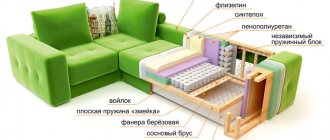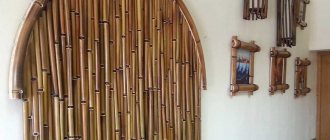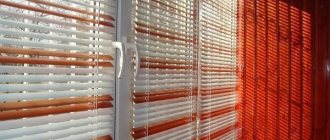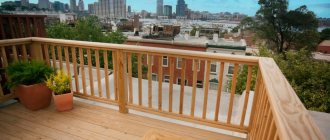Description and characteristics
Poplin is a cotton fabric produced by plain weaving thick warp threads with thin weft threads. At the same time, thin ones gently wrap around dense ones, which allows you to get a delicate and pleasant fabric with a strong, internal base. The structure has a characteristic scar on the surface. The fabric is double-sided, with a uniform matte finish on the front and back sides. Longitudinal and transverse threads can differ not only in thickness, but also in composition. Due to the dense underwear that gives the comfort of twisted threads, poplin is thin, smooth and soft.
The density of the material is 110-120 g/m2, and there are 50-60 threads per 1 cm2.
Products made from such fabric perfectly absorb moisture and support air exchange due to their microporous structure. Clothing made from poplin is cool and comfortable in summer, and not cold in winter thanks to its thermoregulating properties. The material does not form creases, holds its shape, does not stretch and does not require ironing. The fabric is environmentally friendly, does not accumulate static electricity, dust and bacteria and does not cause allergic reactions.
Clothing made from poplin is environmentally friendly, and bed linen provides a comfortable rest.
Production
Thin but quite dense poplin fabric retains its given shape well, so many sewing masters like to use it for both simple and complex silhouettes that amaze with their sophistication. An important distinguishing feature of this material is the characteristic type of weave, which creates a recognizable ribbed relief on the fabric. Upon careful examination, you can see all the details of the weave of the threads.
The technology for creating poplin is based on the plain (poplin) type of weave of a thin warp and thick (twice as much as the warp) weft threads. It is important that all the fibers are intertwined with each other as closely as possible, the distance between the threads is very small. As a result, manufacturers receive a thin, but very durable and wear-resistant fabric with a pleasant surface, since dense threads are surrounded by many soft fibers.
Story
The place where the fabric appeared was France, in the ancient city of Avignon. The production of poplin from natural silk was established in the 14th century for tailoring. The Pope was the first admirer of the material and wanted vestments for him and those around him to be made only from poplin.
Interesting! The name "poplin" is associated with the head of the church. In Italian, "papalino" means papal.
Gradually, cotton and synthetic fibers began to be added to the composition of the fabric. In Russia, they learned about the fabric in the 18th century and sold it as “European calico.” Since then, poplin has remained popular. The fabric is produced in Russia, India, Turkey and China.
Positive traits
- Soft and smooth.
- Shape and wear resistance.
- Bright and rich designs do not fade for a long time even from contact with the sun.
- No shrinkage or pilling.
- Hygroscopicity and hygienic properties.
- After creasing, it restores its shape.
- Does not require ironing. It is enough to spread the linen on the bed.
- Retains warmth in cold weather.
- Strength and durability.
- Does not lose quality after 400 washes.
- Affordable price and prevalence.
- Eco-friendly and antibacterial properties.
How many people, so many opinions - reviews of popular fabric
To verify the high characteristics of poplin, it is enough to look at the reviews; for the most part, they are positive and confirm the advantages of the fabric.
I sew for the family myself, a very useful hobby these days. I tried poplin for bed linen; I bought it not pure, but with an admixture of elastane (5%). We have been using it for two years now, the linen does not wrinkle, does not fade, and you don’t have to iron it after washing. I'm happy with the fabric, it was worth the money.
Olga
I bought poplin bed linen (100% cotton), hesitated for a long time in the store, calico was cheaper, but I chose poplin, it is more pleasant to the touch. Washing and ironing did not affect the color and shape, quite a lot of time has passed, but I do not regret the choice. The fabric did not wrinkle, the sheets did not sag, however, it took longer to dry than synthetics, but these are minor inconveniences compared to the advantages.
Marianne
Mom sews homemade blouses and dressing gowns from poplin, and we wear them with pleasure. The fabric is pleasant to the body, does not wrinkle, thin but dense, even in the heat the body rests. Although the colors are bright, things do not fade in the sun. Easy to wash, no special care required.
Nina
Varieties by composition
- Cotton
- Silk
- Cotton blend with the addition of a percentage of viscose and synthetics.
- Stretch, elastane threads are added to dress poplin, which allows it to stretch.
One type of material is polypoplin. The main thing about this fabric is its high synthetic content. So manufacturers are trying to increase wear resistance and reduce the cost of products, focusing on a wide range of consumers. Polypoplin washes off stains and dirt well, dries quickly, retains its shape, but loses its hygroscopicity and is rougher when in contact with the skin.
An example of a mixed material is macopoplin, consisting of 80% cotton fiber and 20% polyester. The canvas undergoes poppy processing, which gives it a high density of 130 g/m², durability and wear resistance while maintaining smoothness and softness.
Poppy processing involves cleaning cotton raw materials using electronic equipment, which significantly increases hygroscopicity and breathability. The yarn is uniform, smooth and clean. From such identical threads a smooth fabric is woven, which is evenly colored with color printing and holds the dye for a long time.
Standards used in manufacturing
The production, storage and transportation of poplin fabric is governed by the standards used in the production of other plain weave fabrics. For example, GOST 21790-93 and GOST 29298-2005 present the requirements for appearance, color fastness, wear resistance and other indicators.
Thus, the density of fabric intended for the manufacture of bed linen should not be lower than 110 threads per 1 square meter. cm, which corresponds to high density (85-120), while in sewing many items of clothing, low density material is used - 20-30 threads per 1 sq. cm.
As another example of the requirements of Gosstandart, one can cite a standard requiring the whiteness of bleached fabric to be at least 80%.
Types of fabric depending on color and pattern
- Bleached poplin as a result of chemical treatment. It turns out completely white and durable. The material is devoid of ugly yellowish and gray shades. The procedure can be final for obtaining a white canvas or preliminary for subsequent dyeing.
- The plain-dyed material is first bleached and then painted in the desired color on special drums. It goes through several cycles of dyeing and washing over time, which ensures resistance to fading.
- The printed material has a pattern applied on special machines. The paint does not fade in the sun and is safe for health. Prints and patterns are applied to the canvas using airbrushing, using mesh templates and by machine.
- Multi-colored poplin as in the photo is obtained by using multi-colored threads for weaving. The threads are pre-dyed with a reagent dye in three steps. First, adsorption occurs with the absorption of particles. Then diffusion, when the pigment penetrates deep. The process is completed by fixing the dye.
- Printing is obtained by applying a realistic and clear pattern or ornament to the material. Several technologies are used.
- Direct, when the dye goes directly onto the base. Sometimes the paint is fixed on top with a film, which makes the fabric stiffer and reduces air permeability.
- Etched with a pattern applied to a pre-painted base. In the right places, the dye is simply etched.
- Reserve printing, in which individual areas are coated with a reserve mixture that protects against the ingress of dye. After painting and drying, the reserve composition is removed.
Classification by application
Depending on the purpose, poplin is distinguished:
- Bed
- Dress
- Sorochechny
- Believa
- Children's
- Curtain
Scope of application
With the return of fashion for eco-friendly, natural and breathable fabrics, poplin has become in demand. The material used is:
- Comfortable bed linen
- Men's shirts and women's dresses
- Pants and suits for summer
- Pajamas and other sleepwear
- Poplin with silk thread is used for elegant dresses, jackets and men's jackets
- Things for sports
- Casual clothes for children
- Home textiles: curtains, tablecloths, towels
- Stuffed Toys
Craftswomen use poplin for decoration, souvenirs and decoration. Our mothers and grandmothers sewed blouses, dressing gowns, pajamas and T-shirts from this fabric. Poplin sews well and is easy to process. But when cutting, you need to take into account the location of the fragments of the drawing.
Poplin or calico. What's better
Calico is no less popular in the production of bed linen, like poplin. It is obtained from cotton fibers using the same weaving method, but the threads used are of the same thickness. Bedding made from it is durable and affordable; the brightness of the colors is well preserved.
Poplin is superior to calico in its smoothness and softness of structure. In the meantime, the calico will become less rigid and will go through several washing cycles. Poplin fabric is 2-2.5 times denser than calico.
Poplin is of higher quality and looks more luxurious, but the price is higher. Calico is considered a budget option, although it has good performance qualities.
Differences between poplin and satin
Satin is a level higher and is considered an elite fabric. During production, thin cotton threads are double weaved.
Poplin is not as strong as satin. It also excels in silkiness, especially fabrics containing silk and synthetics. They can even be called slippery. This bed is the most comfortable for summer days.
The performance characteristics of the fabric affect the price.
The poplin set will be a worthy alternative to elite satin and inexpensive calico.
Poplin and percale - what's the difference?
Percale is compared to silk for its softness, lightness and smoothness. It is durable and dense 130-150 g/m2, which holds down and feathers.
The strength of the material is confirmed by the fact that parachutes are made from it. Made from untwisted cotton threads, thinner than poplin. Percale is worse than poplin only in that it wrinkles more and requires ironing. The fabric is highly valued and is used for luxury bedding.
Video
This video will tell you about what Poplin is.
There were also negative reviews, but much less. Most likely, the dissatisfaction is not related to the quality of the fabric, but to the dishonesty of manufacturers who counterfeit well-known brands. Very often they pass off synthetics as poplin, so they shed, shrink, and pill. If you carefully choose a seller and don’t fall for cheap counterfeits, you won’t be disappointed. Also read which fabric is best for bedding in this article.
How to care
Products made from poplin contain natural cotton fiber, therefore they are not afraid of washing in hot water, high-speed spinning and active use. Things dry quickly and do not need ironing. The fabric can withstand all loads and after several years the original appearance does not change. Use bleach only on white fabric.
Products containing silk or synthetic fibers require more handling. Before washing, study the product label to avoid mistakes.
Washing in this case is allowed at +30-35° in delicate mode. At high temperatures the material shrinks. Squeeze, but do not twist.
For silk products, use only soft, liquid detergents and low-speed spinning.
Poplin with any fiber composition should be sorted by color and washed separately. For long-term storage, use paper and fabric bags.
Does the fabric need special care?
Recommendations for caring for poplin bedding
Let us note the basic recommendations for caring for such products. The need for special conditions arises with a certain composition. Therefore, it is important to first study the components in the structure of the model. Manufacturers indicate care recommendations on the label. They should be followed. If the composition contains synthetics or silk, handle the item with care. It is important to monitor the water temperature, which should not be hotter than 40 degrees. Be careful with the spin. It is better to wash by hand.
